2 Introduction – integrated, ecosystem-based management
As an ocean and coastal nation, Norway is responsible for managing a rich and varied natural environment. Norwegian waters support abundant natural resources that have been an important basis for the development of the welfare state. Norway’s long-term approach to ocean resource management for the benefit of society as a whole has a long tradition. Value creation from ocean-based activities now and in the future depends on maintaining good environmental status and high biodiversity in the marine and coastal environment, safeguarding the oceans as a source of food and using ocean resources sustainably. In this white paper, the Government describes how it intends to continue and consolidate Norway’s integrated, ecosystem-based ocean management plan system.
Many environmental problems in the oceans are transboundary in nature, and the distribution of many living marine resources extends across national borders. Moreover, the oceans are under growing pressure from human activities. Changes in the ocean environment resulting from climate change, ocean acidification and inputs of pollutants such as hazardous substances and plastic waste not only have environmental impacts, but also have consequences for food security (supplies of safe and nutritional food), productivity, ocean-based industries and coastal communities. There is growing international recognition that the oceans offer part of the solution to major global problems such as hunger and malnutrition and climate change. These factors combined will make it vital to have a sound framework for ocean management and ocean policy in the future.
The UN Sustainable Development Goals provide a global framework for the international community’s efforts to promote development that meets the needs of the present without compromising the ability of future generations to meet their own needs. The 17 SDGs are a blueprint for a concerted global effort to be undertaken in the years up to 2030 to achieve environmentally, socially and economically sustainable development for everyone.
When the SDGs were adopted by the UN General Assembly in September 2015, the oceans were assigned a key role and a specific goal, SDG 14 on life below water, which is to ‘conserve and sustainably use the oceans, seas and marine resources’. Success in achieving SDG 14 will play a part in achieving several of the other goals, such as SDG 2 on zero hunger, SDG 7 on affordable and clean energy, SDG 8 on decent work and economic growth, SDG 9 on industry, innovation and infrastructure, SDG 12 on responsible consumption and production, SDG 13 on climate action and SDG 15 on life on land, see Figure 2.1. Conversely, the extent to which some of the other SDGs are achieved will have major implications for the state of the marine environment in the future. This applies particularly to SDG 13 on climate action and SDG 12 on responsible consumption and production.
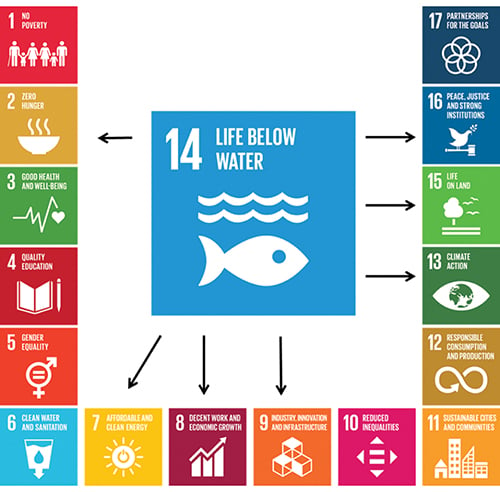
Figure 2.1 Implementation of SDG 14 will also play a part in achieving other SDGs.
Source United Nations Association of Norway/Ministry of Climate and Environment
The basis for the system of integrated ocean management plans was laid in the white paper Protecting the Riches of the Sea (Report No. 12 (2001–2002) to the Storting). Since then, the Storting (Norwegian parliament) has considered and approved management plans for all Norwegian sea areas. Norway has received a great deal of international recognition for its management plans, and a number of countries have developed or are developing their own systems for integrated, ecosystem-based ocean management. These processes have gathered new momentum as the concept of an integrated approach to ocean management that facilitates both value creation and protection of the marine environment has risen higher on the international agenda.
The UN Convention on the Law of the Sea is often referred to as the ‘constitution of the oceans’. The Convention regulates the rights and obligations of states as regards use of the seas and oceans, utilisation of marine resources and conservation of the marine environment. This ensures a predictable framework and stability for investments and economic activity. The Convention is vital for Norway with its strong energy, environmental, seafood and shipping interests. The Convention confers extensive rights on coastal states to utilise living marine resources and other resources on the continental shelf under its jurisdiction, and combines these with a duty to protect and conserve the marine environment. The combination of conservation and sustainable use of the marine environment is specified as the purpose of Norway’s system of ocean management plans.
There is growing international recognition that a sustainable ocean economy must be based on a good knowledge base and a sound marine management regime, together with action to address climate and environmental problems and steps to ensure that economic activity is sustainable.
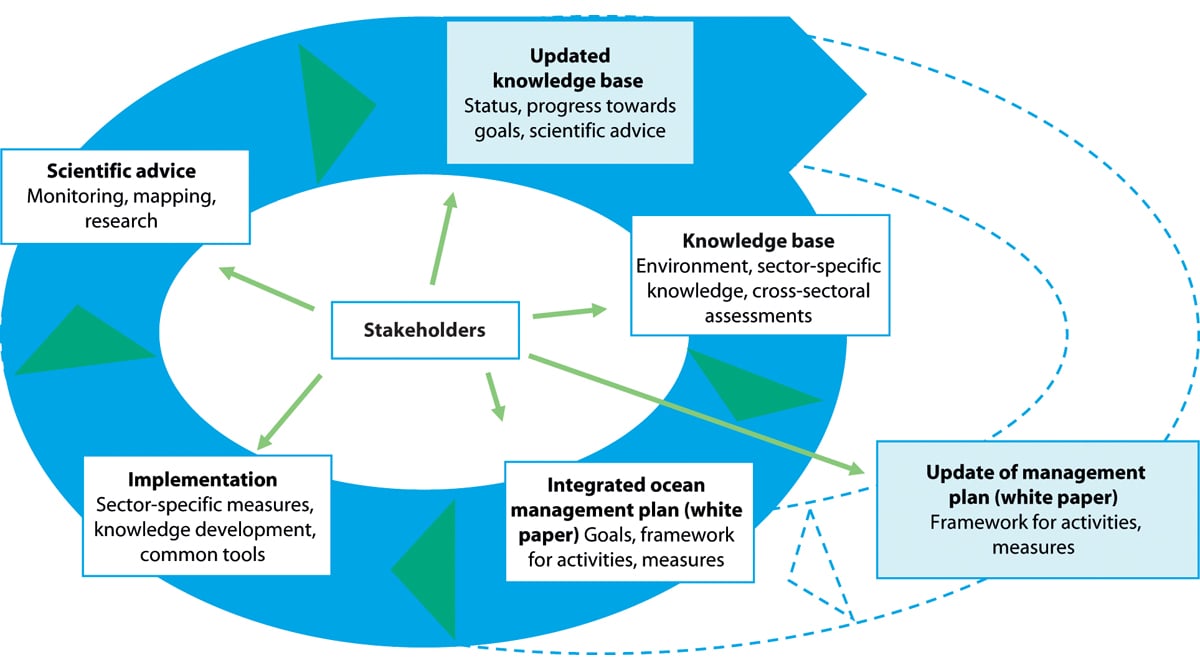
Figure 2.2 Ecosystem-based ocean management.
Source Norwegian Environment Agency
2.1 Norway’s system of integrated ocean management plans
The purpose of the management plans is to provide a framework for value creation through the sustainable use of marine natural resources and ecosystem services and at the same time maintain the structure, functioning, productivity and diversity of the ecosystems. The management plans are thus a tool both for facilitating value creation and food security, and for maintaining the high environmental value of Norway’s seas and oceans. They clarify an overall framework and encourage closer coordination and clear priorities for the management plan areas. Activities in each management plan area are regulated on the basis of existing legislation governing different sectors. The various sectoral authorities have the main responsibility for implementing the measures set out in the management plans, under relevant legislation that they administer.
Integrated, ecosystem-based ocean management is an approach to managing ecosystems and resources that involves finding a balance between use and protection of rich, productive ecosystems and the ecosystem services they provide, and thus promoting an equitable system of conservation and sustainable use. Ecosystem-based management uses available knowledge as a basis, and considers ecosystems as a whole, including people, when decisions are needed on ocean management and marine ecosystem management. The management plans implement an integrated, ecosystem-based management regime by evaluating the cumulative effects of all human activities on the marine environment and by managing the use of the oceans in a way that maintains the natural functions of ecosystems and ecosystem services. Ecosystem services are a vital basis for long-term value creation.
Norway’s ocean management plans are also integrated in the sense that they bring together all relevant parts of the public administration. Work on the management plans is coordinated by the interministerial Steering Committee for integrated ocean management, which is headed by the Ministry of Climate and Environment. Other ministries represented in the committee are the Ministry of Labour and Social Affairs, the Ministry of Finance, the Ministry of Defence, the Ministry of Justice and Public Security, the Ministry of Local Government and Modernisation, the Ministry of Trade, Industry and Fisheries, the Ministry of Petroleum and Energy, the Ministry of Transport and the Ministry of Foreign Affairs.
The management plans are knowledge-based. The scientific basis for the plans is drawn up by two advisory groups: the Forum for Integrated Ocean Management and the Advisory Group on Monitoring. The Forum for Integrated Ocean Management is headed by the Norwegian Environment Agency and is responsible for drawing up an overall scientific basis for updating and revising the management plans in cooperation with the Advisory Group on Monitoring. The Advisory Group on Monitoring (headed by the Institute of Marine Research) coordinates monitoring programmes for marine ecosystems and reports on environmental status in the management plan areas, see Figure 2.3.
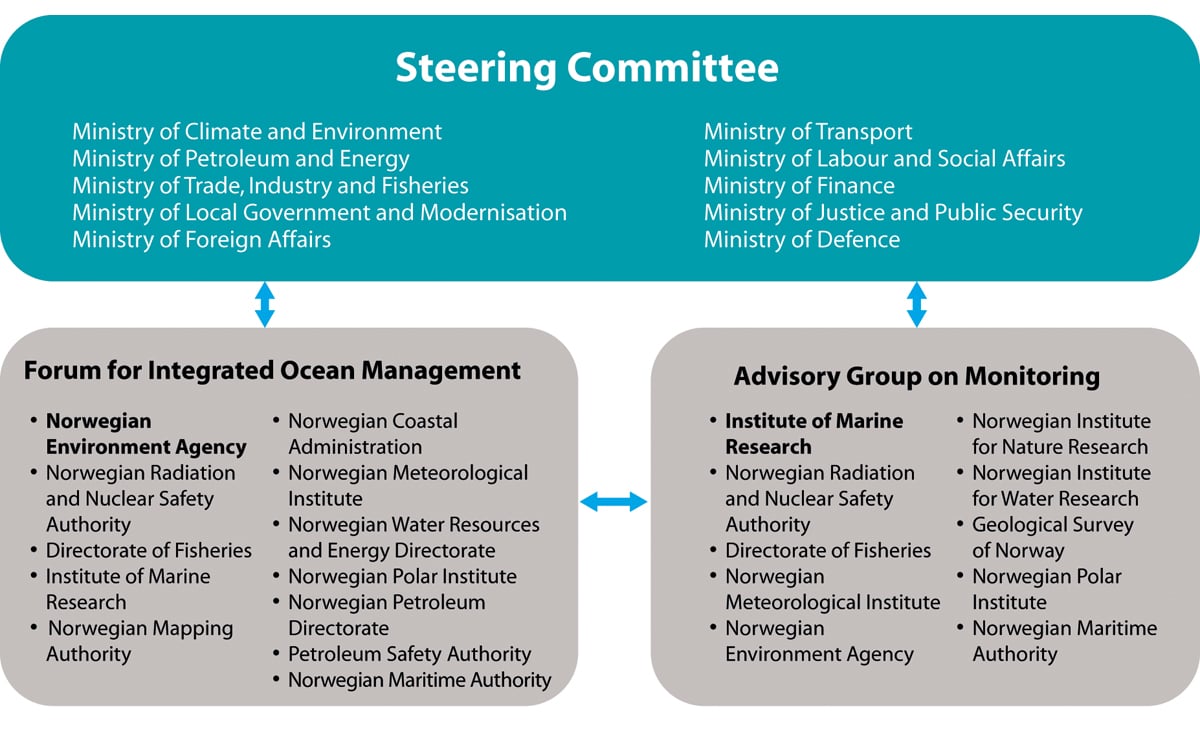
Figure 2.3 Organisation of the management plan work and government agencies represented in the Forum for Integrated Ocean Management and the Advisory Group on Monitoring.
Source Ministry of Climate and Environment
The management plan work does not specifically address important issues relating to safeguarding public and national security and maintaining emergency preparedness. However, sound ocean management, a clear framework for civilian and military activities and the availability of information for all stakeholders also contribute to clarity and predictability, and play a part in preventing accidents and maintaining crisis management capacity at sea.
2.2 The Government’s ocean policy
The Government is giving high priority to an active ocean policy and ocean-based commercial activities, both nationally and internationally. In spring 2017, the Government published its ocean strategy New growth, proud history and presented two white papers, The place of the oceans in Norway’s foreign and development policy (Meld. St. 22 (2016–2017)) and Update of the integrated management plan for the Norwegian Sea (Meld. St. 35 (2016–2017)).
In June 2019, the Government presented its updated ocean strategy, Blue Opportunities. The strategy highlights five key elements on which the Government’s ocean policy is based:
i) promoting, developing and defending the Law of the Sea;
ii) promoting conservation and sustainable use of marine ecosystems;
iii) contributing to knowledge-based management;
iv) supporting the implementation of international ocean-related instruments;
v) advocating an integrated approach to marine management that will underpin a sustainable ocean economy.
The Government has also taken important international ocean-related initiatives. In 2018, the High-level Panel for a Sustainable Ocean Economy was established. The Panel consists of heads of state and government from 14 countries, and is supported by the UN Secretary-General’s Special Envoy for the Ocean. The Panel is co-chaired by Norway’s Prime Minister and the President of Palau. Its members represent 30 % of the world’s total coastline, 30 % of its exclusive economic zones, 20 % of the world harvest from the oceans and 20 % of the shipping in the world fleet. The purpose of the Panel is to create international awareness of the economic importance of the oceans, and an understanding that sustainable use of marine resources and safeguarding a healthy marine environment must be the foundation for increasing value creation. The need for integrated ocean management occupies a central place in the Panel’s work, and was also a vital part of the backdrop to the Our Ocean conference that Norway’s Minister of Foreign Affairs hosted in Oslo in October 2019.
2.3 White paper on all Norway’s integrated ocean management plans
In this white paper, the Government describes how it intends to continue and consolidate Norway’s integrated, ecosystem-based ocean management plan system. The white paper brings together all three management plans for the first time. It includes a revised management plan for the Barents Sea–Lofoten area and updated management plans for the Norwegian Sea and the North Sea and Skagerrak. The white paper does not cover the waters off Bouvet Island or the Norwegian dependencies in Antarctica.
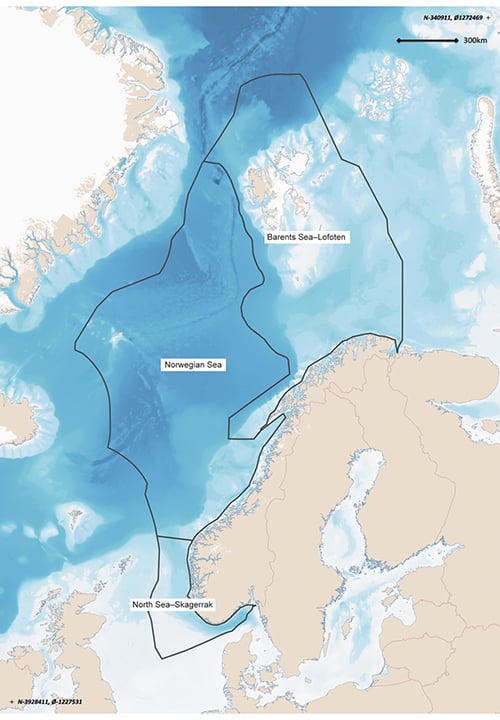
Figure 2.4 Map of the three management plan areas: the Barents Sea–Lofoten area, the Norwegian Sea and the North Sea and Skagerrak.
Source Norwegian Environment Agency
This white paper also follows up three requests from the Storting to the Government: a request dated 18 June 2015 to present an overall revision of the management plan for the entire Barents Sea–Lofoten area in the ordinary way, a request dated 14 June 2017 to present a scientifically based update of the delimitation of the whole marginal ice zone, including the West Ice, in connection with the revision of the management plan for the Barents Sea–Lofoten area, and a request dated 14 June 2017 for a new definition of the marginal ice zone if appropriate as part of the revision of the same management plan.
The overall scientific basis for this white paper consists of eleven reports on various topics from the Forum for Integrated Ocean Management and reports on environmental status in the three management plan areas from the Advisory Group on Monitoring (see Figure 2.5 and Appendix 1). In addition, the Management Forum commissioned reports giving an account of updated knowledge about the marginal ice zone and the polar front. Together, these documents constitute a status report on ecosystem-based management of Norway’s seas and oceans. A report summarising the overall scientific basis for the management plans has also been compiled. The reports are available to the public, and in most cases consultations, conferences and seminars have been organised during their preparation. A conference was also organised during preparation of the white paper to give stakeholders an opportunity to provide input, and written input was invited after the conference. All written input to the white paper is available on the Ministry of Climate and Environment’s website on regjeringen.no.
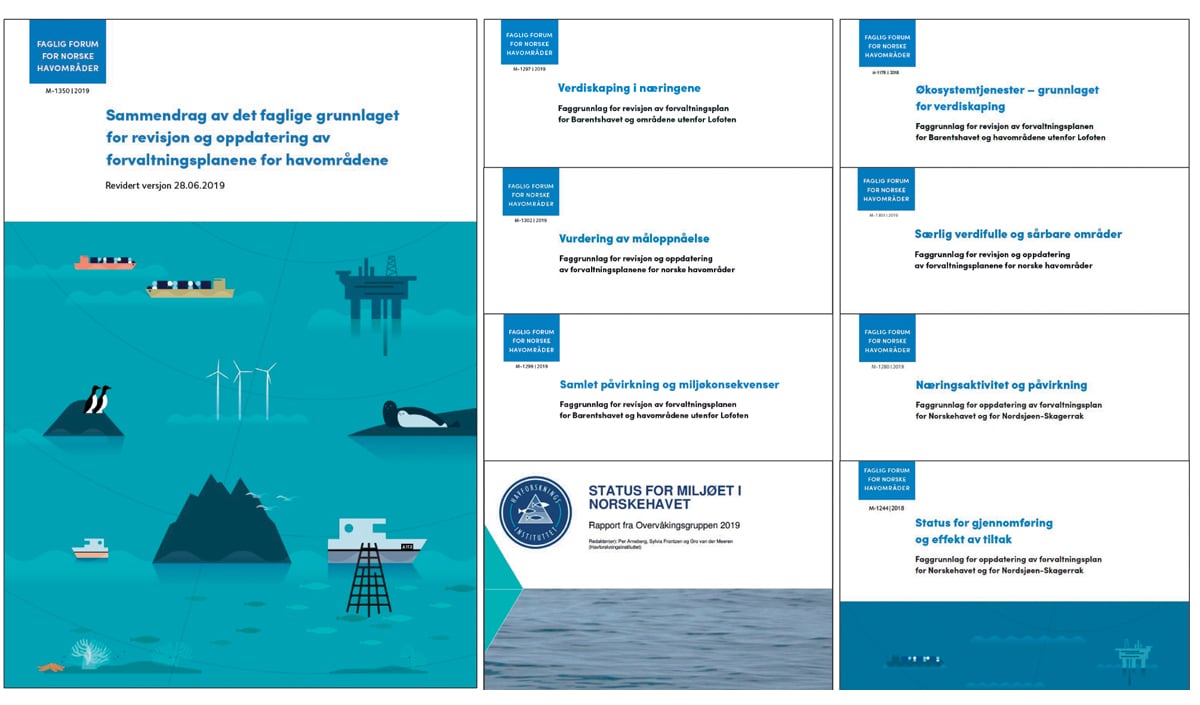
Figure 2.5 Some of the reports that are included in the scientific basis for the management plans (available in Norwegian only).
Source Forum for Integrated Ocean Management
The main emphasis for many of the topics discussed in this white paper is on changes and trends in the years after publication of the previous white papers on each management plan area. More thorough discussions of state, trends and measures for certain topics, such as marine litter and plastic pollution, can therefore be found in earlier white papers. Some topics and measures that were described in earlier white papers for individual management plan areas are relevant more generally, and are also discussed in the present white paper.
Structure of the white paper
Chapter 3 of the white paper gives an account of environmental status in the management plan areas, focusing on changes and trends. It also includes a review of progress towards the targets set out in the earlier management plans, based on measures that have been implemented. Chapter 4 describes changes that are taking place in the oceans at global level as a result of climate change and biodiversity loss, and what the implications may be for Norway’s seas and oceans. In addition to the scientific basis for the management plans, the chapter draws extensively on the IPCC Special Report on the Ocean and Cryosphere in a Changing Climate, published in September 2019, and the global assessment report published by the Intergovernmental Science-Policy Platform on Biodiversity and Ecosystem Services (IPBES) in May 2019. Chapter 5 gives an account of ocean-based industries and forecasts of their development. There has been some reorganisation of this chapter, and it is now structured more around ocean ecosystem services that form the basis for commercial activities and value creation than was the case in earlier white papers. The chapter also includes a brief description of the green transformation that is taking place in several ocean industries and of the establishment of new industries as a way of achieving the Government’s climate targets.
Chapter 6 assesses the risk of acute pollution from shipping and petroleum activities, describes the preparedness and response system, and discusses the risk of acute radioactive pollution. Chapter 7 describes Norway’s spatial management policy for the oceans, and Chapter 8 gives an account of relevant international cooperation on ocean management as a follow-up to the white paper The place of the oceans in Norway’s foreign and development policy. Chapter 9 describes the overall framework and measures for conservation and sustainable use of ecosystems in the management plan areas adopted by the Government.
2.4 Norway’s goals for integrated ocean management
As part of the integrated ocean management plans, goals have been set for the Government’s ocean policy and for management of the three management plan areas. These goals concern environmental status, value creation, coexistence between ocean industries, conservation and sustainable use.
Previously, the wording of the goals has varied to some extent between the different management plan areas, and some goals have only applied to one of the areas. In this white paper, the goals have been harmonised so that they all apply to all three management plan areas. In some cases, they have been clarified and simplified to facilitate reporting on progress towards the goals.
The following are the Government’s goals for management of the management plan areas:
Value creation, commercial activities and society
General goals
Norway’s ocean management will promote sustainable use of ecosystems, areas and resources that ensures long-term value creation, employment and people’s welfare, to the benefit of Norway’s regions and the country as a whole.
The ocean industries will continue to promote value creation and secure welfare and business development to the benefit of the country as a whole.
Management of commercial activities in the management plan areas will be coordinated to ensure that the various industries are able to coexist and that the overall level of activity is adjusted to take account of environmental considerations.
Fisheries and seafood
Living marine resources will be managed sustainably through the ecosystem approach.
Norway’s seas and oceans will be a source of safe seafood.
Harvesting activities and natural resource use that provide a high long-term yield within sustainable limits will be facilitated.
Petroleum activities
Steps will be taken to facilitate the long-term profitable production of oil and gas. Petroleum activities will be carried out within a predictable framework and on the basis of health, environment and safety requirements and standards that are adapted to environmental considerations and the needs of other industries.
Offshore renewable energy
The development of offshore renewable energy production will be facilitated, taking into account environmental considerations and other activities.
Maritime transport
Favourable conditions will be provided for safe, secure, effective and environmentally friendly maritime transport.
Biodiversity and ecosystems
General goals
Norway’s seas and oceans will be managed in a way that maintains diversity at ecosystem, habitat, species and genetic levels, and the productivity of ecosystems. Human activity in the management plan areas will not damage the structure, functioning or productivity of ecosystems.
Management of particularly valuable and vulnerable areas
In particularly valuable and vulnerable areas, activities will be conducted with special care and in such a way that the ecological functioning and biodiversity of these areas are not threatened.
The management regime will take special account of the need to protect vulnerable habitat types and species in particularly valuable and vulnerable areas.
Species and habitat management
Naturally occurring species will exist in viable populations that provide for sufficient reproductive capacity and long-term survival.
Species that are essential to the structure, functioning, productivity and dynamics of ecosystems will be managed in such a way that they are able to maintain their role as key species in these ecosystems.
Harvested species will be managed within safe biological limits so that their spawning stocks have good reproductive capacity.
Populations of endangered and vulnerable species and species for which Norway has a special responsibility will be maintained or restored to viable levels.
The introduction and spread of alien organisms through human activity will be avoided.
In marine habitats that are particularly important for the structure, functioning, productivity and dynamics of ecosystems, activities will be conducted in such a way that all ecological functions are maintained.
Damage to marine habitats that are considered to be endangered or vulnerable will be avoided.
Sustainable harvesting
Management of living marine resources will be based on the principles of sustainable harvesting.
Harvesting will not have significant adverse effects on other parts of the marine ecosystem or its structure.
Bycatches of marine mammals and seabirds will be minimised.
Living marine resources will be harvested making use of the best available techniques for different types of gear to minimise negative impacts on other ecosystem components such as marine mammals, seabirds and benthic communities.
Management of fish stocks and other biological resources will be adapted to a changing climate so that stocks are maintained at sustainable levels.
Marine protected areas
A representative, ecologically coherent network of well-managed marine protected areas will be established in Norwegian waters.
Climate change and ocean acidification
When marine ecosystems are used as carbon sinks, the need to maintain biodiversity and natural ecosystem functions will be taken into account.
The cumulative effects of human activities on habitats and species that are adversely affected by climate change or ocean acidification (e.g. coral reefs) will be minimised, in order to maintain ecosystem functioning as fully as possible.
Pollution, marine litter and the risk of acute pollution
General goals
Releases and inputs of pollutants to the management plan areas will not result in injury to health or damage the productivity of the natural environment and its capacity for self-renewal. Activities in these areas will not result in higher levels of pollutants in seafood.
Hazardous and radioactive substances
Environmental concentrations of hazardous and radioactive substances will be reduced to background levels for naturally occurring substances and will be close to zero for synthetic substances. Releases and inputs of hazardous or radioactive substances will not cause these levels to be exceeded.
Releases and use of substances that pose a serious threat to health or the environment in the management plan areas will be continuously reduced with a view to eliminating them.
Operational discharges from activities in the management plan areas will not result in damage to the environment, higher levels of pollutants in seafood, or elevated background levels of oil, naturally occurring radioactive substances or other environmentally hazardous substances over time.
Inputs of nutrients, sediment deposition and organic material
Anthropogenic inputs of nutrients, sediment deposition and inputs of organic matter will be limited in order to avoid significant adverse impacts on biodiversity and ecosystems in the management plan areas.
Marine litter
Inputs of waste and microplastics to the management plan areas will be avoided.
Waste quantities in marine and coastal areas will be reduced by means of clean-up operations where appropriate.
Underwater noise
Activities entailing a noise level that may affect species’ behaviour will be limited to avoid the displacement of populations or other effects that may have negative impacts on the marine ecosystem.
Risk of acute pollution
The risk of damage to the environment and living marine resources from acute pollution will be kept at a low level, and continuous efforts will be made to reduce it further.
The high safety level in maritime transport will be maintained and strengthened.
The governmental preparedness and response system for acute pollution will be adapted to and dimensioned on the basis of the level of environmental risk at any given time.
Textbox 2.1 Classification system for assessment of ecological status
The classification system for assessment of ecological status will be used as a basis for an overall, knowledge-based assessment of the status of Norway’s major ecosystems. The system will be based on a set of scientific indicators and on available scientific knowledge about status and trends in Norwegian ecosystems.
In ecosystems where ecological status is good, ecosystem structure, functioning and productivity do not deviate significantly from those of intact ecosystems. Both ‘intact ecosystems’ and ‘good ecological status’ are defined on the basis of scientific knowledge and criteria.
Seven properties have been identified that can be used to characterise ecosystems where ecological status is good. These are primary production, biomass at different trophic levels, functional groups of organisms, functionally important species and structures, ecological patterns at landscape level and abiotic conditions. A general assessment of ecological status is made with respect to each of these properties, and these are used as a basis for assessing the overall ecological status of the ecosystem as a whole.
The system for assessing the ecological status of marine ecosystems will be used together with the goals and indicators established as part of the ocean management plans, and will complement them. The need for any adjustments to ensure the best possible coherence between goals and indicators will be considered later.
Pilot tests of the system have already been carried out, for example for the ecosystem in the Arctic part of the Barents Sea. Development of the system is continuing.
The Norwegian Environment Agency is coordinating the development of a classification system for ecological status in all ecosystems (except for ecosystems in inland and coastal waters; these are already covered by the classification system used under the Water Management Regulations, which implement the EU Water Framework Directive in Norwegian law). The classification system for marine ecosystems will be established as part of the work on the ocean management plans. The Norwegian Institute of Marine Research is heading the subgroup for this part of the work. The knowledge generated will supplement the scientific basis for the management plans and will be integrated into the work of the Forum for Integrated Ocean Management. The first assessment of ecological status for all Norway’s sea and ocean areas is expected to be completed in the course of 2021. This will make it possible to further refine and supplement the goals for the management plans.